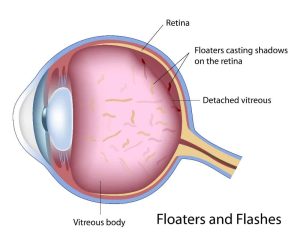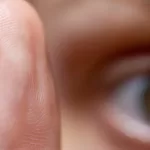
Understanding Eye Floaters: Symptoms, Causes, and When to See a Doctor
Eye floaters are a common visual phenomenon that can appear as tiny specks, threads, or cobweb-like shapes drifting across your field of vision. While they are usually harmless, eye floaters can sometimes indicate underlying eye conditions. In this article, we’ll delve into what causes eye floaters, their symptoms, and when to seek professional medical advice.
What Are Eye Floaters?
Eye floaters are small clumps of cells or protein fibers within the vitreous, the gel-like substance that fills the inside of the eye. These clumps cast shadows on the retina, the light-sensitive layer at the back of the eye, resulting in the appearance of floaters.
Most floaters are more noticeable when looking at a plain, bright background, such as a clear sky or a blank wall. While they may be distracting, they typically move out of your direct line of sight and do not pose a significant issue for vision.
Common symptoms include:
- Spots or strings in your vision that move as your eyes move.
- Shadows that seem to float away when you try to focus on them.
- Small shapes that appear to drift when you shift your gaze.
Floaters are usually most prominent under bright lighting conditions and may diminish or become less noticeable over time.
What Causes Eye Floaters?
Eye floaters often occur as a natural part of aging. The vitreous becomes more liquid over time, leading to microscopic fibers clumping together. These clumps cast shadows on the retina, creating floaters.
Other causes include:
- Posterior Vitreous Detachment (PVD): This occurs when the vitreous gel pulls away from the retina, often due to age.
- Inflammation (Uveitis): Inflammation in the layers of the uvea can cause floaters.
- Bleeding in the Eye: Blood cells released into the vitreous due to injury, diabetes, or hypertension can appear as floaters.
- Retinal Tears or Detachment: In rare cases, floaters may signal a retinal tear or detachment, which requires immediate attention.
- Eye Trauma or Surgery: Physical damage or procedures affecting the eye can lead to floaters.
When to See a Doctor
While most eye floaters are harmless, certain situations warrant a visit to an eye specialist:
- A sudden increase in the number of floaters.
- Flashing lights in your vision.
- Loss of peripheral or central vision.
- Changes in floaters following eye injury or surgery.
These symptoms could indicate a retinal tear, detachment, or other serious eye conditions requiring prompt medical attention.
Diagnosis and Treatment
An ophthalmologist can diagnose the cause of eye floaters using a comprehensive eye exam. They may dilate your pupils to examine the retina and vitreous more closely.
In most cases, treatment isn’t necessary as floaters often fade or become less noticeable. However, for severe cases affecting vision, treatment options include:
- Vitrectomy: A surgical procedure to remove the vitreous and replace it with a saline solution.
- Laser Therapy: Laser treatment to break up floaters into smaller, less noticeable pieces.
Both options carry risks and are generally reserved for extreme cases.
Preventing Eye Floaters
While floaters are often unavoidable, maintaining overall eye health can help reduce the risk of complications:
- Schedule regular eye exams.
- Manage chronic conditions like diabetes and hypertension.
- Protect your eyes from injury with proper safety gear.
- Maintain a healthy diet rich in vitamins A, C, and E.
Conclusion
Eye floaters are usually a natural result of aging, but sudden changes or additional symptoms like flashing lights and vision loss could signal a more serious condition. If you notice any concerning signs, don’t hesitate to consult an eye specialist. Staying proactive about your eye health is the best way to ensure clear vision for years to come.





